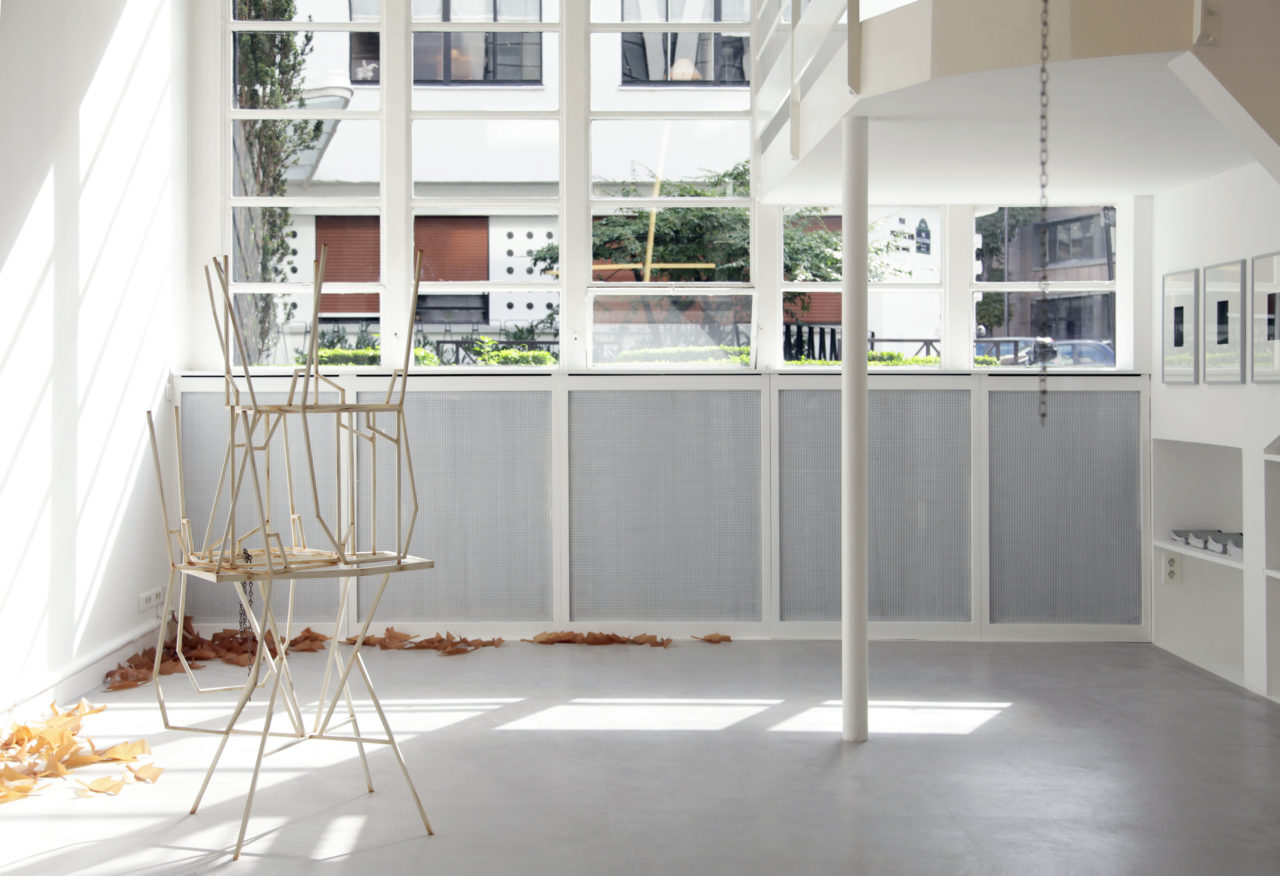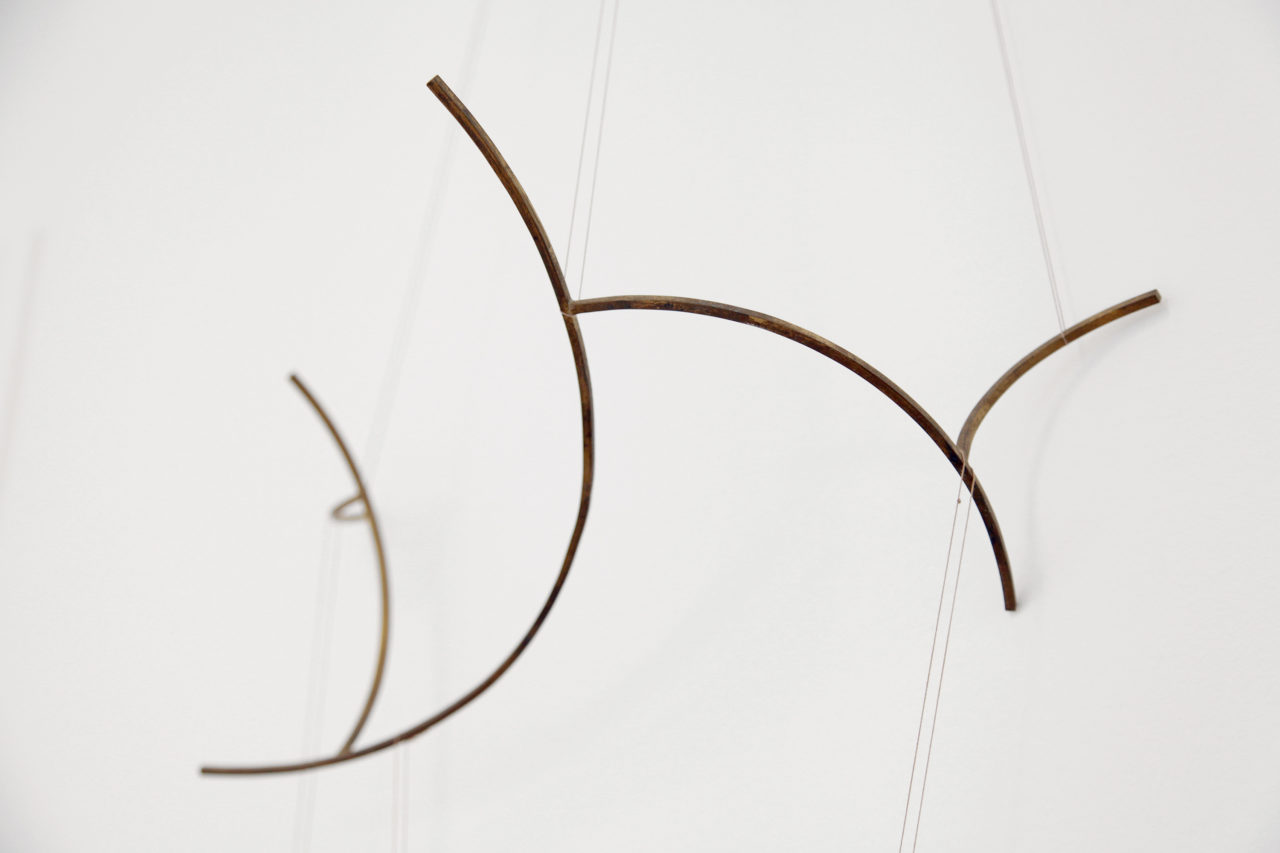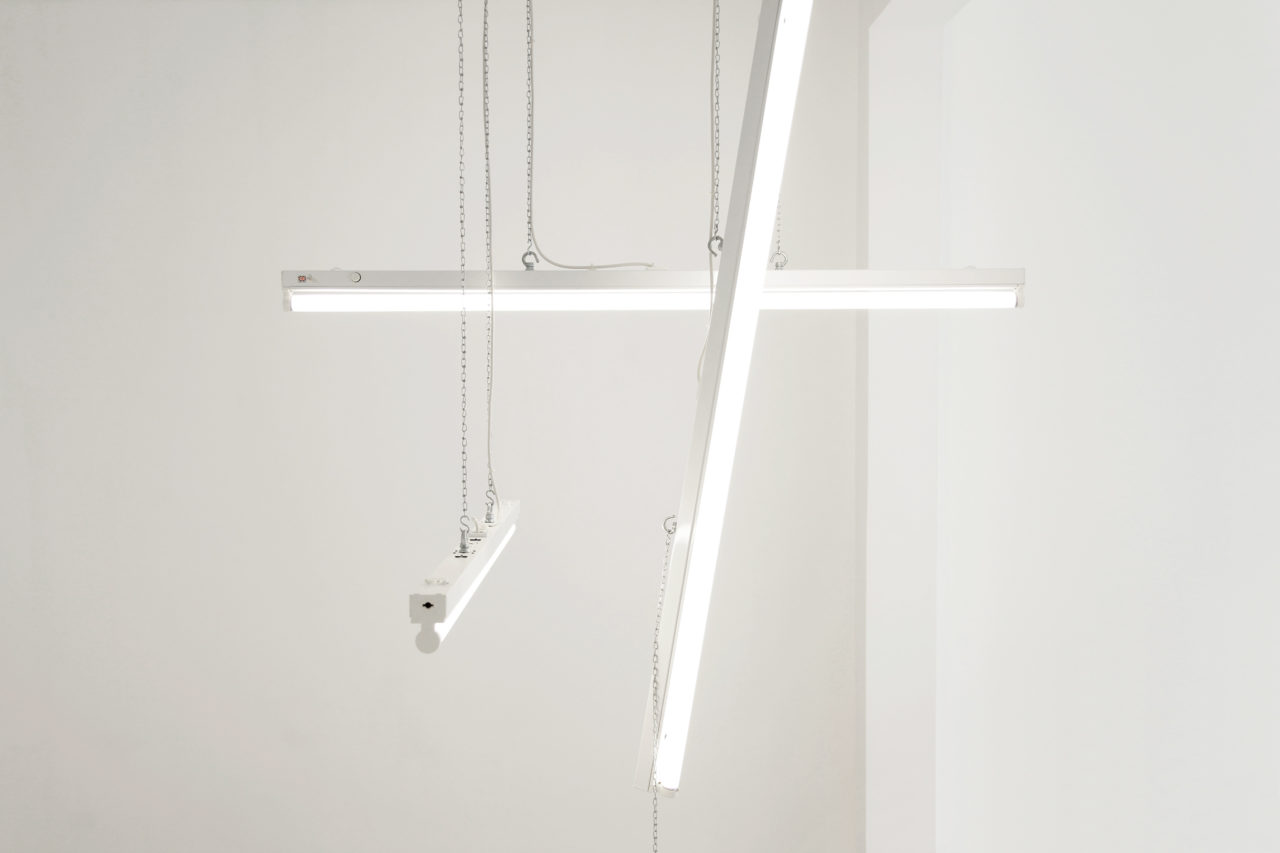We are very happy about the invitation to the Fondation Hippocrène, this wonderful institution. It was clear to us right away that we must respond to this special place with a special exhibit. Focusing on Martin Boyce was an obvious choice – for his connection with Jan and Joël Martel alone. When we heard that the president of the Fondation Hippocrène, Michèle Guyot-Roze, also greatly appreciates Martin’s work, the course for the realization of our concept was set. We are very pleased to have the opportunity to do this exhibition and extremely grateful for the good and professional collaboration with the Fondation Hippocrène.
Axel Haubrok
The Thoughts that breathe exhibition at the Fondation Hippocrène puts the works of Martin Boyce, Carol Bove, Bojan Šarčević, and Markus Schinwald in a new light – one in which Robert Mallet-Stevens created his work. It is a lovely coincidence that the exhibit takes place in the fall: at a time where it gets darker, where light pales, similar to the way we perceive the modern age as a period that is past and that we have repressed in part, but which will continue to haunt us. After all, without classical modernity, contemporary art as we know it would not be conceivable.
The main focus of the Thoughts that breathe exhibit is on the Scottish sculptor Martin Boyce (born in 1967 in Hamilton, lives in Glasgow). His work is marked by his efforts in grappling with the architecture, design, and art of modernism, which he charges with subtle references to film noir, post-punk music, and poetry. In this manner he ascribes to them a latently narrative quality, thus undermining the claim to the autonomy of the classical avant-garde, whose alleged achievement it was to create works that were independent of time and place. Boyce links the dreams, fears, and memories with the values of an age whose reception has been subjected to constant change to this day. “My work is not centered on research or the unveiling of the past but hijacks the image we have of it and transports it into the future, where it can metamorphose into something else.”
His replicas of modular shelving systems by Charles and Ray Eames reflect this approach in an exemplary way. Boyce combined their different parts in such a way that the results no longer fulfill their purpose as containers but are only placed inside the room like broken or corrupted revenants of their originals.
For example, the black shelf variant You are somewhere inside (2000) leaves out a module at every shelving level, so that we can only guess at what is hidden inside. The white version White disaster (2000) is burnt on one side and looks like a run-down dwelling machine from the projects.
Hinting at the dark side of Hollywood, with which the film noir genre deals, Boyce speaks of a “design noir”: it uncovers the shallows of our affluent societies, with which the design classics are now linked in their function as status symbols.
The ventilation grilles Sounds and silences wrought into iron and air (2011) point to the invisible, mysterious goings-on in the shafts and pipes of residential buildings. Four of them are distributed across the rooms and recessed into the walls. Their design picks up the cubist language of shapes of the four concrete trees by Jan and Joël Martel, which the brothers set up in 1925 in a garden by Robert Mallet-Stevens. The trees overcome the contradiction between a poetic representation of nature and industrial esthetics, rationality and unspoiled nature – the garden becomes the hybrid of landscape and modern construction.
The same design is found in the paper collage Thoughts that Breathe (2011) and the leaves made of crepe paper and titled Evaporated pools (2009), which are spread on the floor across all the rooms as if the autumn wind had blown them through the exhibit. Upon closer examination, you even notice that every single leaf is a small replica of the concrete trees by the Martel brothers: a paper copy of the trees which had been put up in the direct vicinity of the exhibition space and which are so crucial for Martin Boyce’s language of shapes.
Contradictions are also the subject of Satellite (2014): stacked rusty steel chairs and tables as they might be found in front of locked restaurants at the end of a beach season, are held together by a chain: a sentimental scenery. Yet the shape also recalls a sputnik – one of the Russian satellites that were the first to reach the Earth’s orbit in the 1950s. Boyce speaks of the “moment in which functional objects become something else” and of an “arrangement that freezes the past long enough for it to return to life.” What is important to him is the memory as a moment that is separated from the present: the sculpture stands in the exhibition room “like a ghost ship in the sea.”
A similar atmosphere of desolation is spread by the three neon tubes that are suspended from the ceiling by chains. In its composition, Untitled (after Rietveld) (1999) brings to mind the language of shapes of the Dutch designer Gerrit Rietveld, but at the same time it looks like a terse statement and as if it had been put together randomly. Here, too, it seems as if the modules had “first collapsed slapstick-like and then suddenly changed into something else.” The dictum of “form follows function” is turning into a principle of chance: form falls into place.
The photographic series A partial eclipse (2012) must be understood as a source of reference and central point of Boyce’s sculptures. The artist, who took them on travels, in hotel rooms, or while looking out a car window, filtered the light from the shots of such urban design situations as park benches, hotel façades, and patios. This gives the photos a melancholy, gloomy and mysterious look, and expresses, in a nutshell, the dilapidated character which Boyce’s work generally possesses. The title of the series suggests this dark mood while at the same time referring to the picture of the round window of the Maritime Hotel in New York: dimmed by a curtain, it is reminiscent of a solar eclipse or a camera lens.
It is this latent presence of transience, of the memory of something that once was directed toward the future, which gives Boyce’s work a romantic touch. He drives the ghosts of modernity in front of him – like the wind blowing the paper leaves through the exhibit.
Bojan Šarčević (born in 1974 in Belgrade, lives in Berlin) also deals with phenomena that pervade the environment in which we live: architecture, nature, and bodies. There are no definite clues or references to specific places or persons – rather, his visual language conveys the fragility and transient character that is associated with structures of this kind.
Something dark sea green is jutting (2006) and Something tan is nodding (2006) are two delicate mobiles made of yarn and brass. This shows a certain similarity with calligraphy, but also to a balancing act, such as one that must be accomplished when climbing up a rock face. However, Šarčević is not trying to evoke a clear picture but rather wants to trigger a sense of the fragility of volatile situations in general.
The ephemeral character of almost all of Šarčević’s works can be seen particularly clearly in the video Miniatures (2002): the artist drives through Parisian suburbs in a car, making sketches of his impressions on the steamed-up windshield. The space he traverses is thus surveyed once again – lacking geographical reference points, the compositions are solely based on a sense of the paths along which the artist moves through the city. They remind us a little of Paul Klee’s drawings, where lines become analogies of paths and directions.
When Carol Bove (born in 1971 in Geneva, lives in New York) takes a look at the history of art and the society of modernity, drawing a line to literature, design, and architecture, her primary focus is the 1960s and ’70s. Bove grew up in Berkeley, California, where the development of a counterculture – the hippie and women’s movements, psychedelic pop music, and the sexual revolution – was especially vivid.
She reflects this period in many of her works, using artifacts and publications which she arranges in minimalist-elegant displays: she presents books, magazines, or peacock feathers picked up at flea markets or driftwood and shells which she collected on the banks of the river in Brooklyn, her home, like historical artifacts on shelving systems or concrete platforms which are placed on delicate metal frames. These platforms have an esthetic character which alludes to an institutional presentation setting. For example, despite its reduced appearance, the installation Vege-tables (Land and sea) (2003) almost resembles the sacred display of a precious scripture.
And the two delicate floor lamps made of steel and brass (untitled (2010)) on the one hand recall the technical equipment used for an exhibition and on the other the types of modern design classics we have seen in Californian villas or West German living rooms since the 1960s.
Bove’s atmospherically dense ensembles as well as her individual sculptures capture the spirit of that period and evoke the experience we can have in front of exhibits in a museum, where objects have the function of placeholders for a past we have not personally lived through and of which we have only vague conceptions. Thanks to the media and museums, however, this past is characterized by myths and stories which can bring us remarkably close to it.
Markus Schinwald’s work circles around the human body and its various states. He turns furniture and fashion, dolls and portrait-painting into prosthesis-like actors with oddly contorted or askew bodies. “I am not trying to rob human beings of their personality but rather to give objects a personality as well.”
The wood sculpture series untitled (Legs) (2009), of which number 8 is shown in Thoughts that breathe, expresses this idea particularly clearly: the legs of Chippendale tables are mounted on wooden bases in such a way that they bring to mind human legs: objects which in their supporting function also have a physical quality become bodies themselves.
This somatic charge has a Freudian undertone, which we find again and again in the work of Schinwald (born in 1973 in Salzburg, lives in Vienna). He is fascinated by the narrow confines of the bourgeois world of the 19th century which is conveyed by these kinds of objects as well as the technological achievements of that period: suddenly the human body is linked to apparatuses that replace it and point at its vulnerability. Without warning, things appear animated and metamorphose into sexually charged fetishes. The artists of the surrealist movement, such as Hans Bellmer and Man Ray, and later on Konrad Klapheck or Louise Bourgeois, dealt with these unconscious mechanisms of perception and the psychological interpenetration of things and bodies.
Schinwald works in this tradition by breathing life into objects. His sculptures appear to be problem-ridden and nervous, maimed and yet alluring. Presented on a wooden base, the legs of the Chippendale table provocatively flaunt their dysfunctional character – deviation from the norm becomes the ideal state.
Gesine Borcherdt

Satellite, 2014
Floor: Martin Boyce
Evaporated pools, 2009
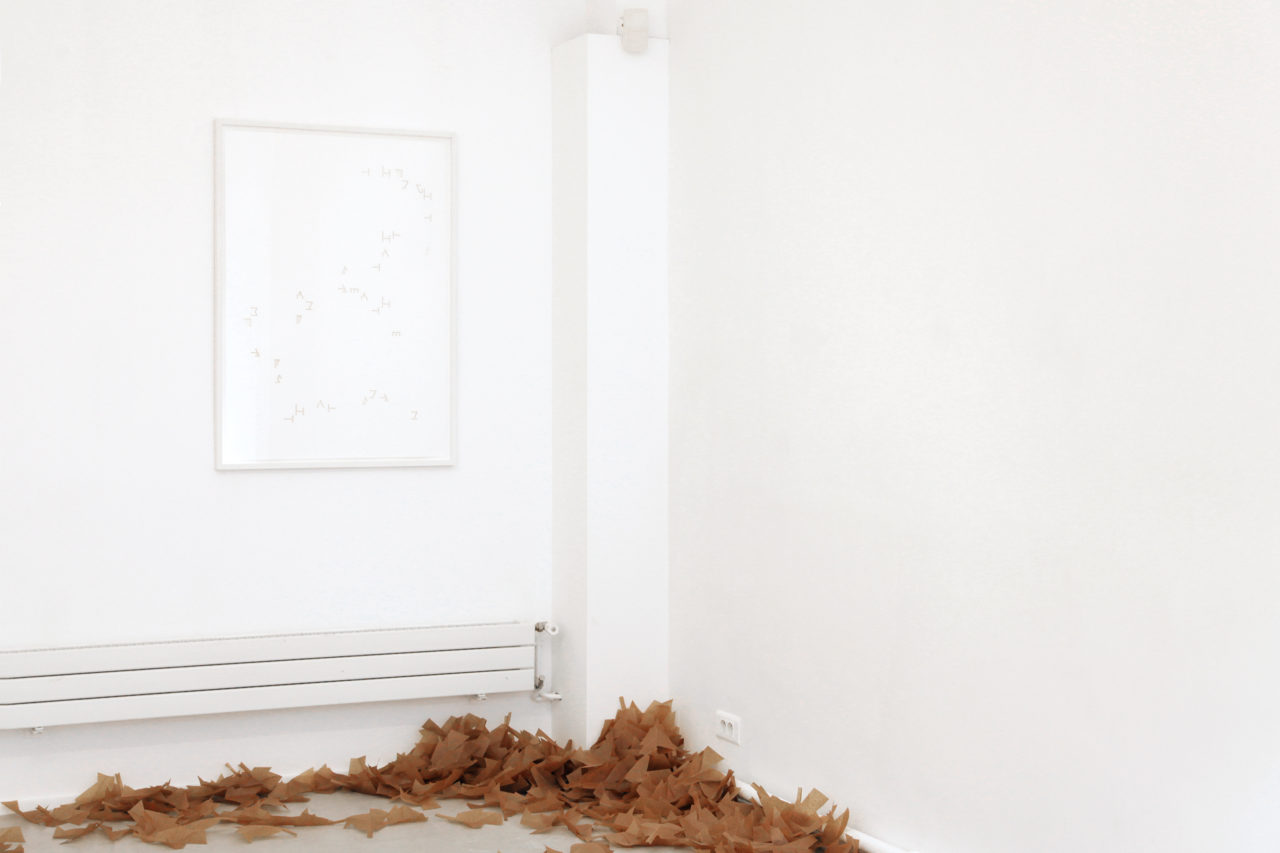
Thoughts that breathe, 2011
Floor: Martin Boyce
Evaporated pools, 2009
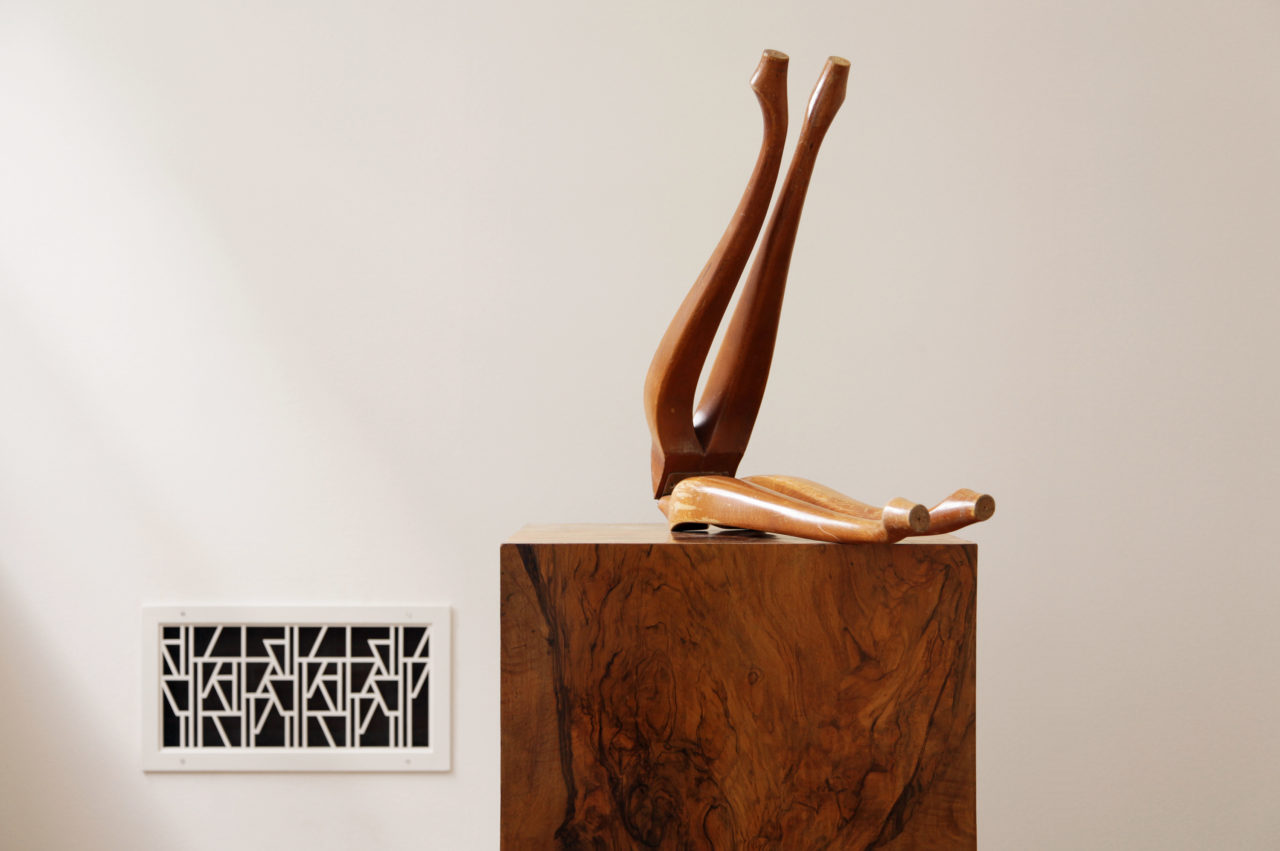
untitled (Legs #8), 2009
Background: Martin Boyce
Sounds and silences wrought
into iron and air, 2011
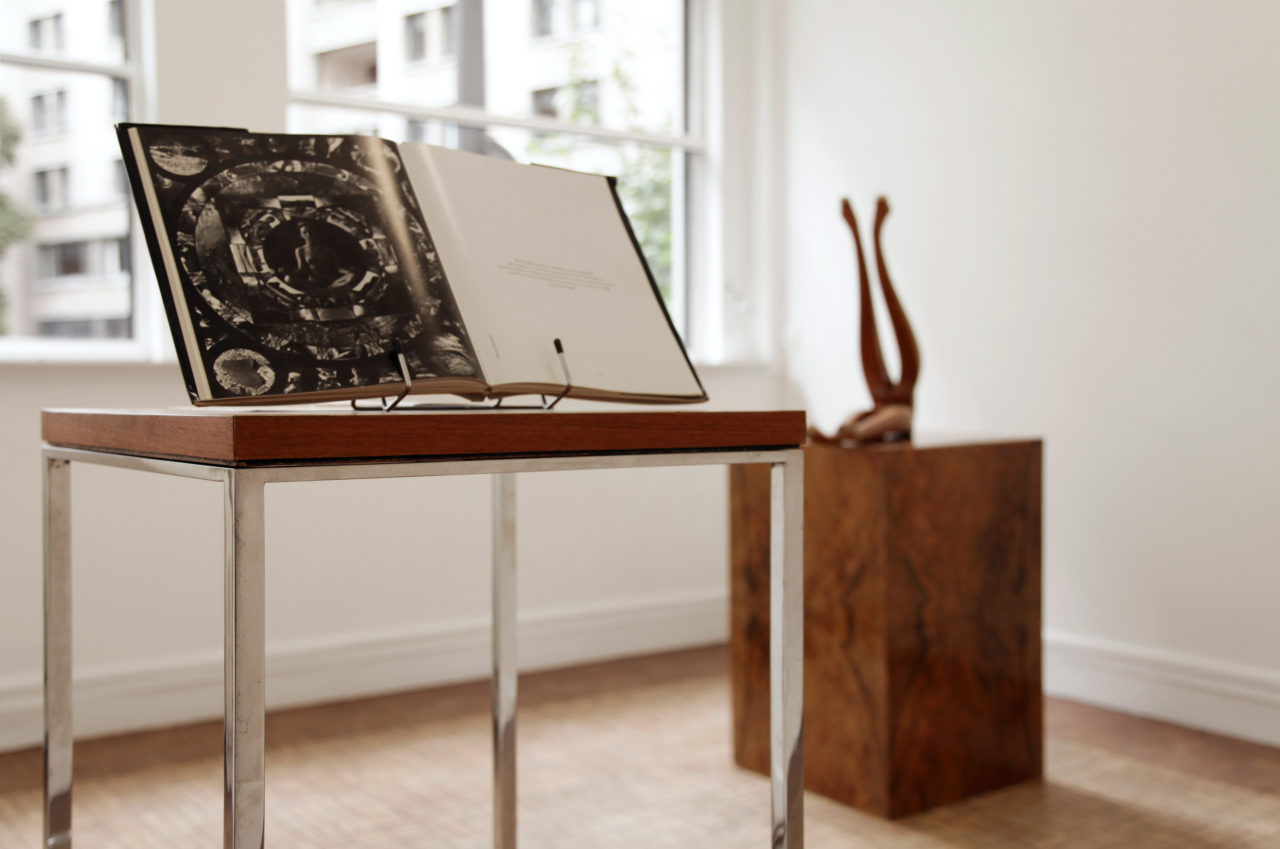
Vege tables (Land and sea),
2003
Background: Markus Schinwald
untitled (Legs) #8, 2009
Vege tables (Land and sea), 2003
Something tan is nodding, 2006
untitled (after Rietveld), 1999
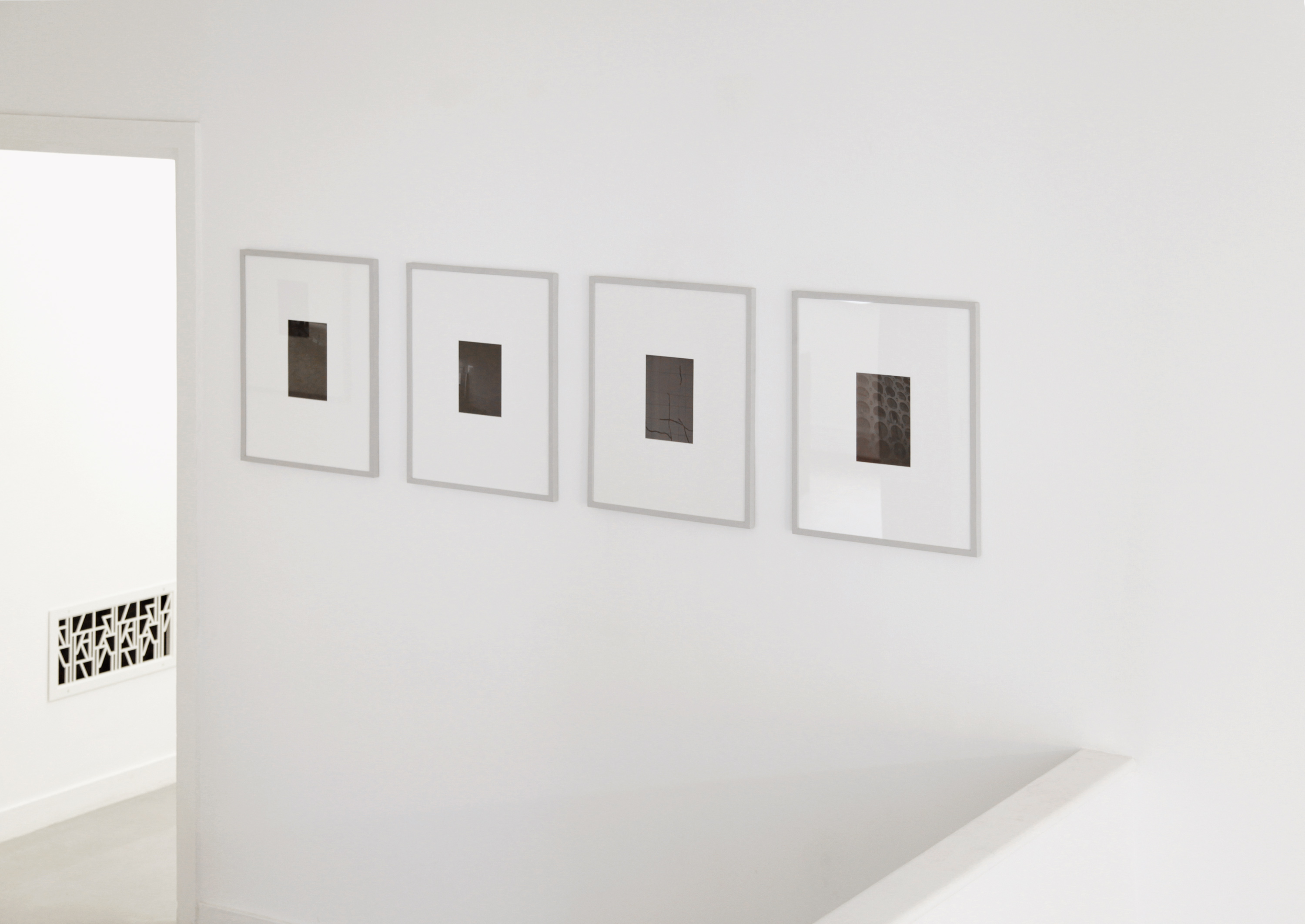
A partial eclipse, 2011
Background: Martin Boyce
Sounds and silences wrought
into iron and air, 2011
List of Works
Carol Bove
untitled, 2010
Carol Bove
untitled, 2010
Carol Bove
Vege-tables (Land and sea), 2003
Martin Boyce
Satellite, 2014
Martin Boyce
A partial eclipse, 2012
Martin Boyce
Sounds and silences wrought into iron and air, 2011
Martin Boyce
Thoughts that breathe, 2011
Martin Boyce
Evaporated pools, 2009
Martin Boyce
Phantom limb (Sister), 2003
Martin Boyce
White disaster, 2000
Martin Boyce
You are somewhere inside, 2000
Martin Boyce
untitled (after Rietveld), 1999
Bojan Šarčević
Something dark sea green is jutting, 2006
Bojan Šarčević
Something tan is nodding, 2006
Bojan Šarčević
Miniatures, 2002
Markus Schinwald
untitled (Legs #8), 2009
